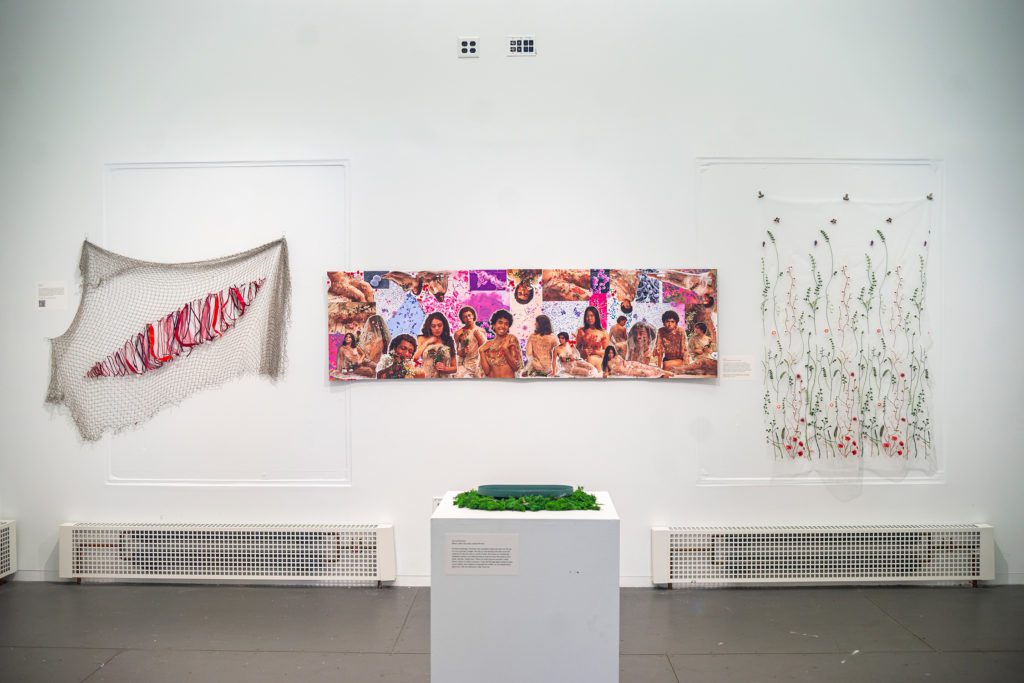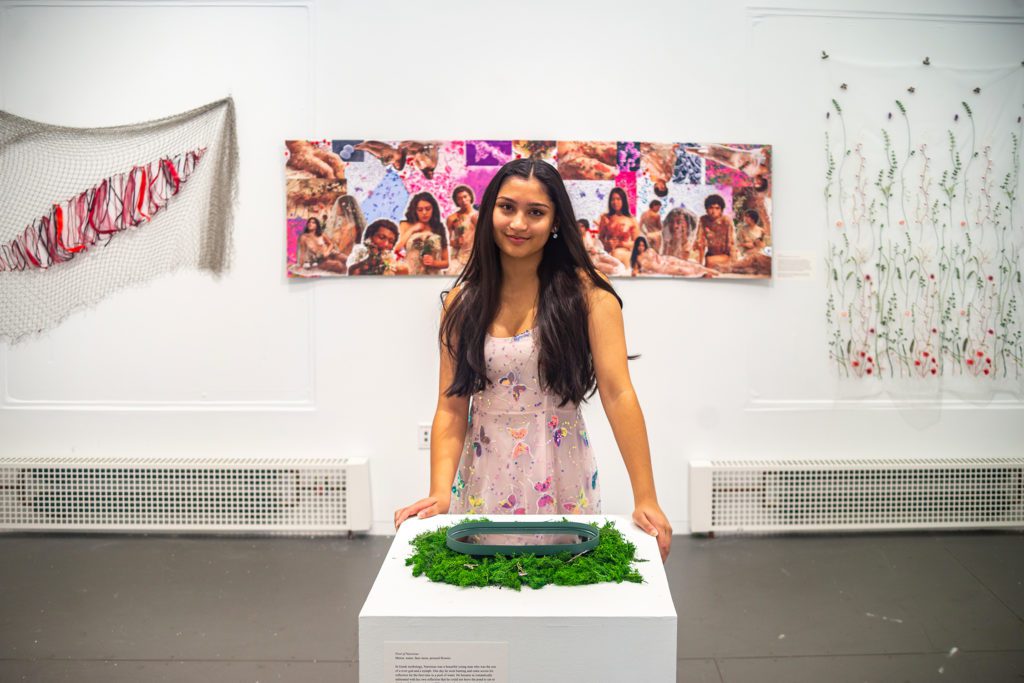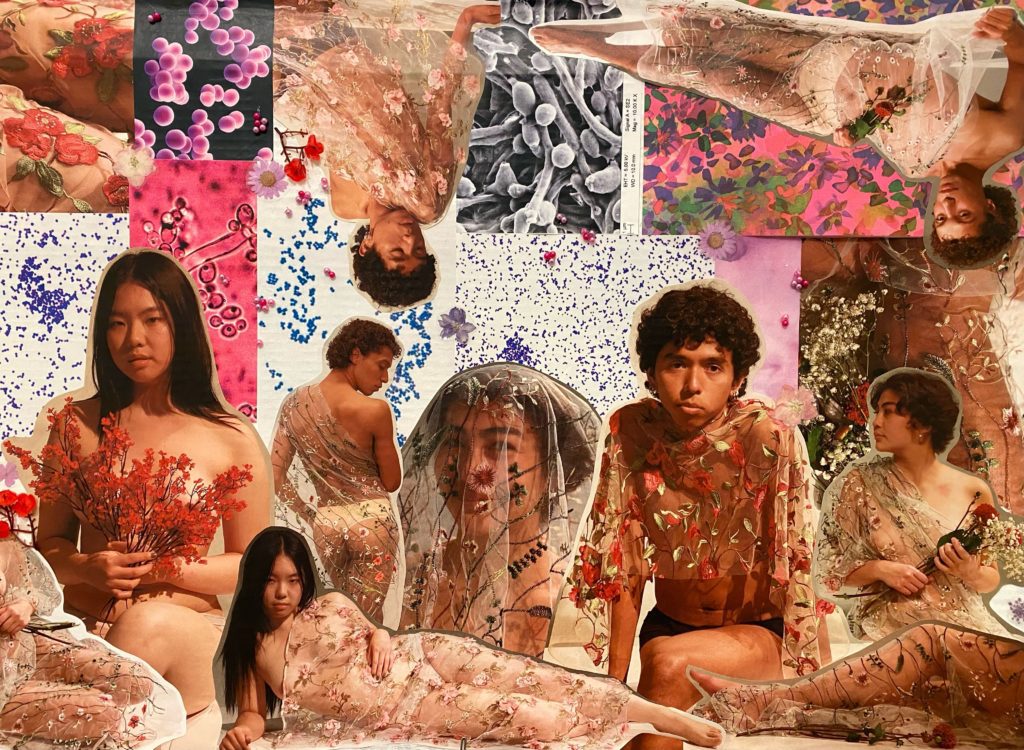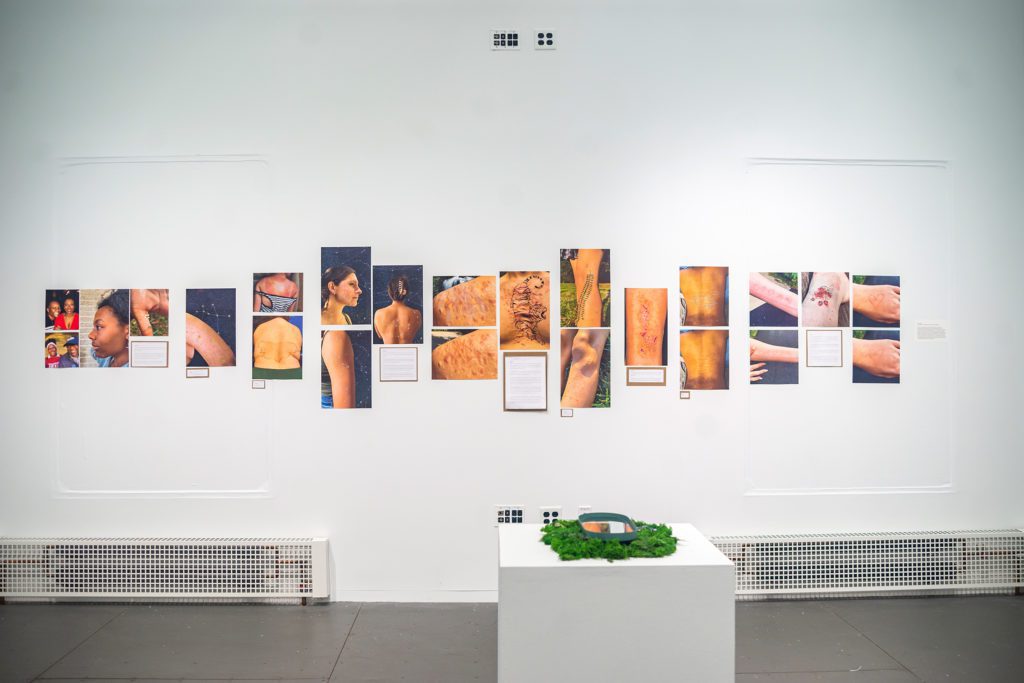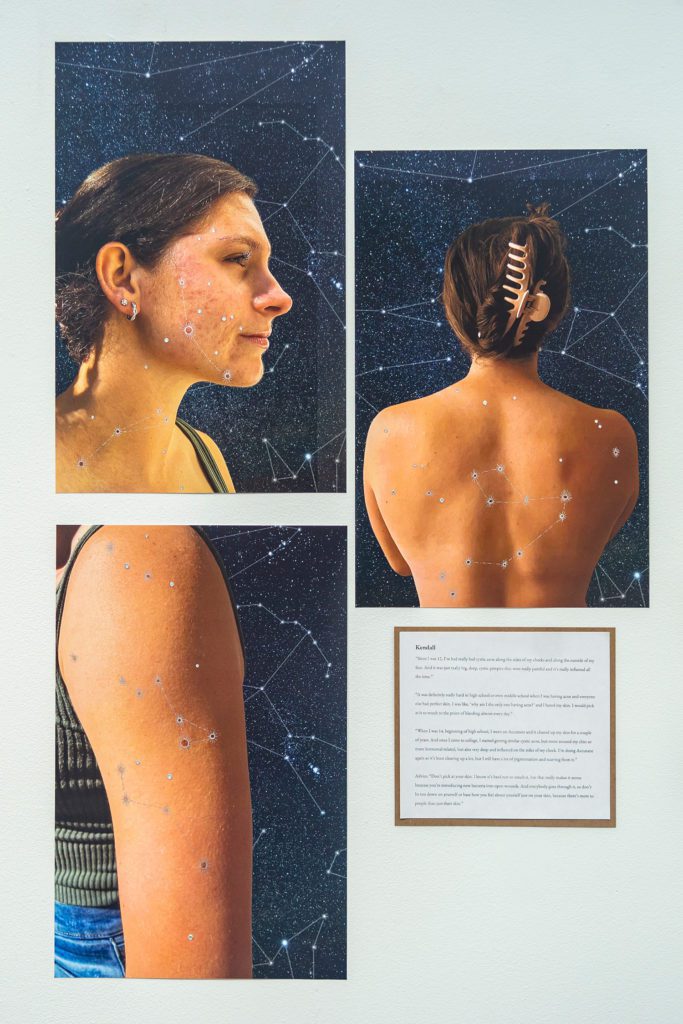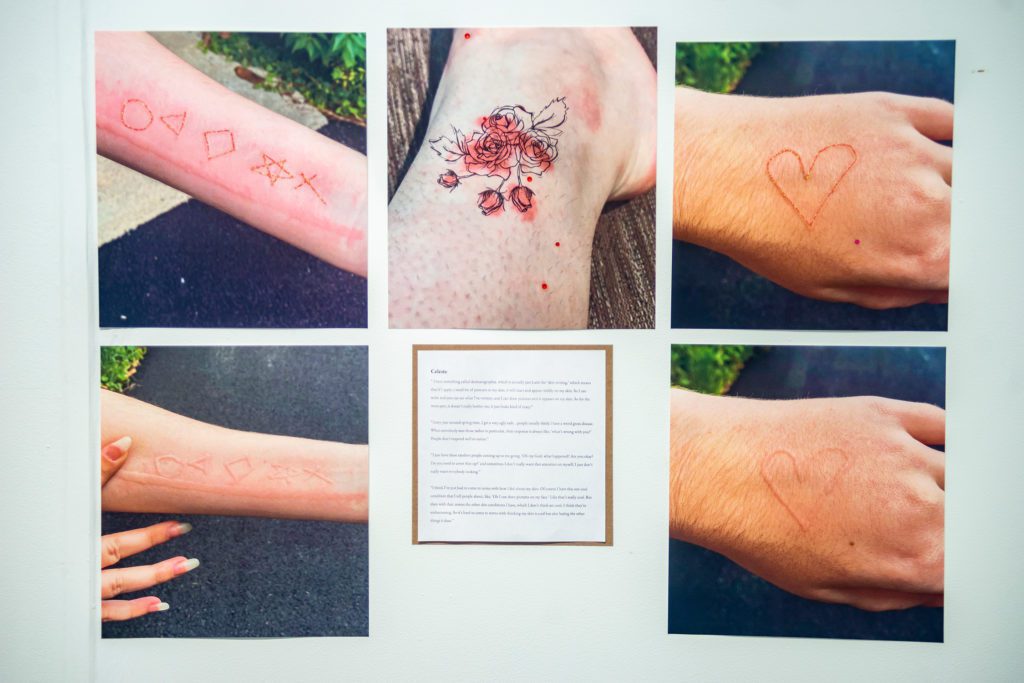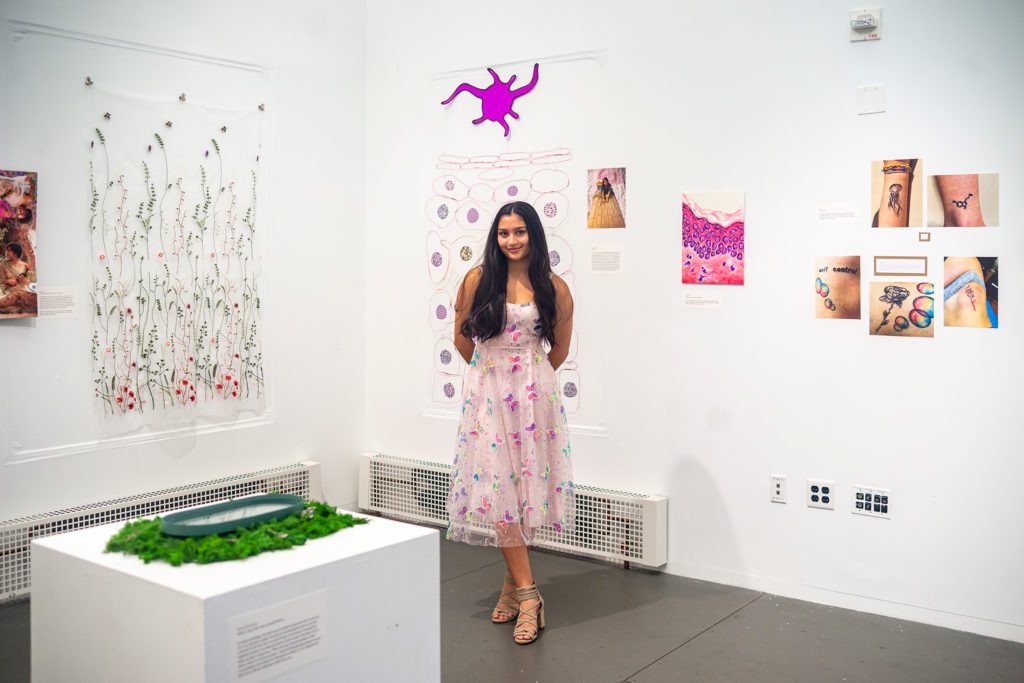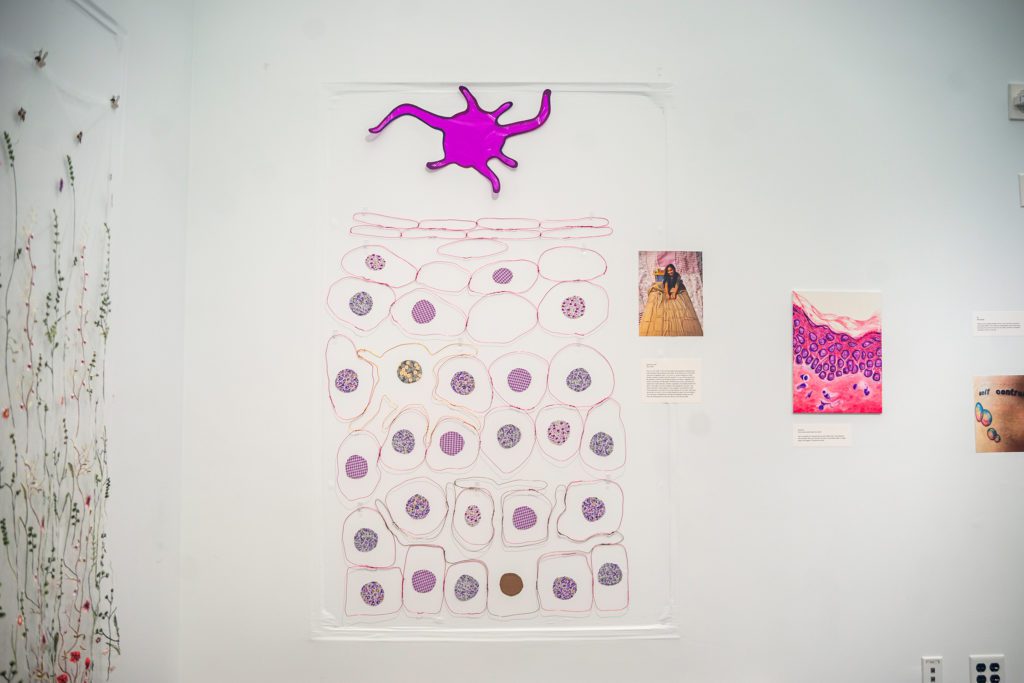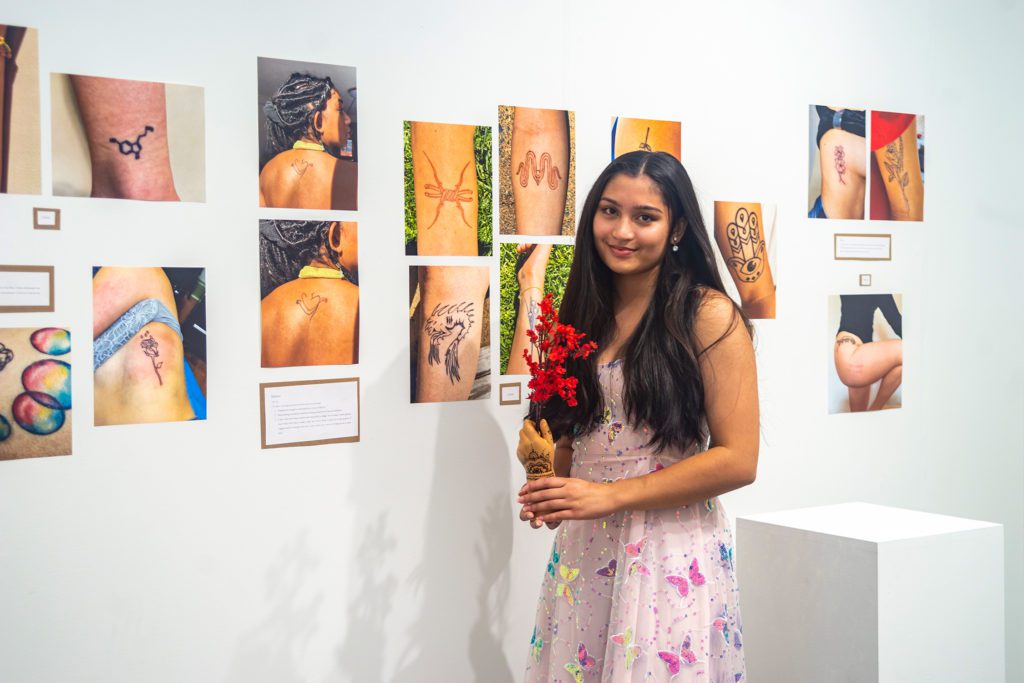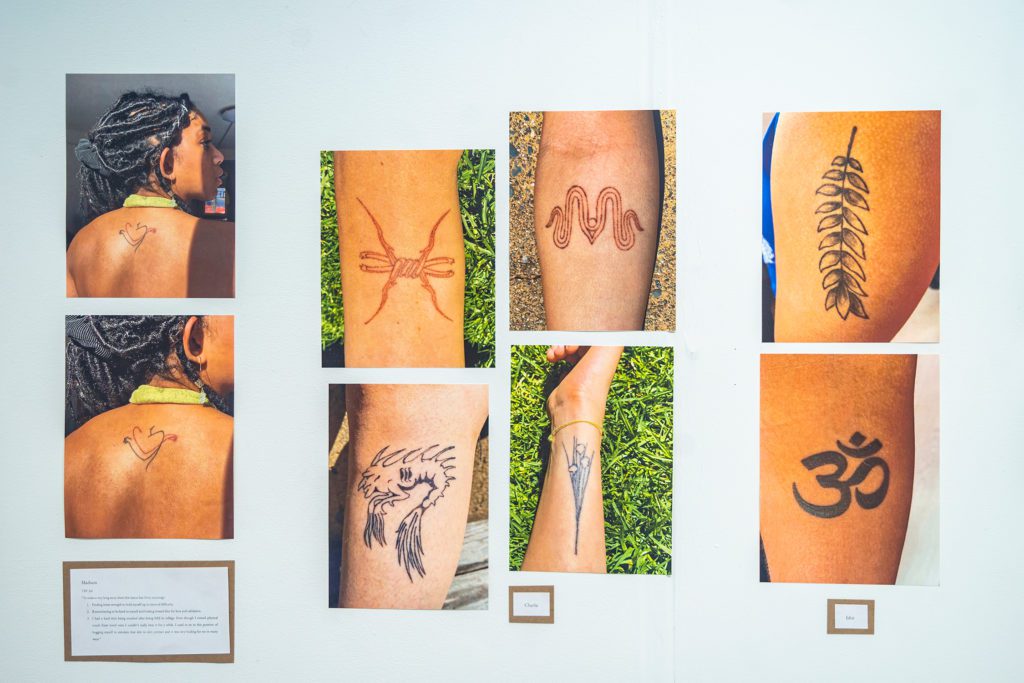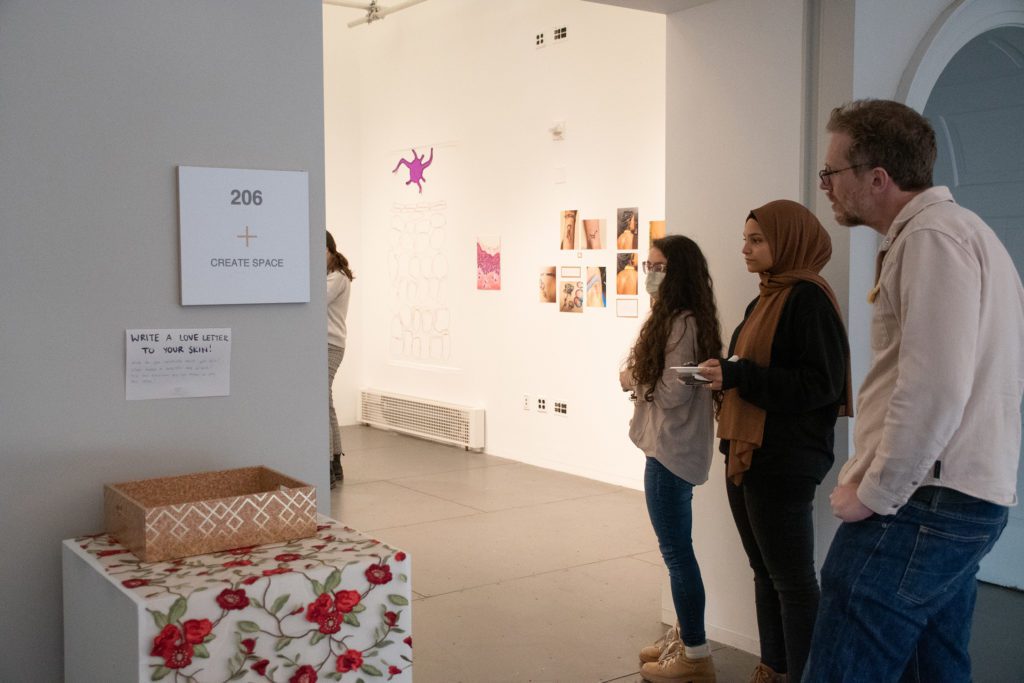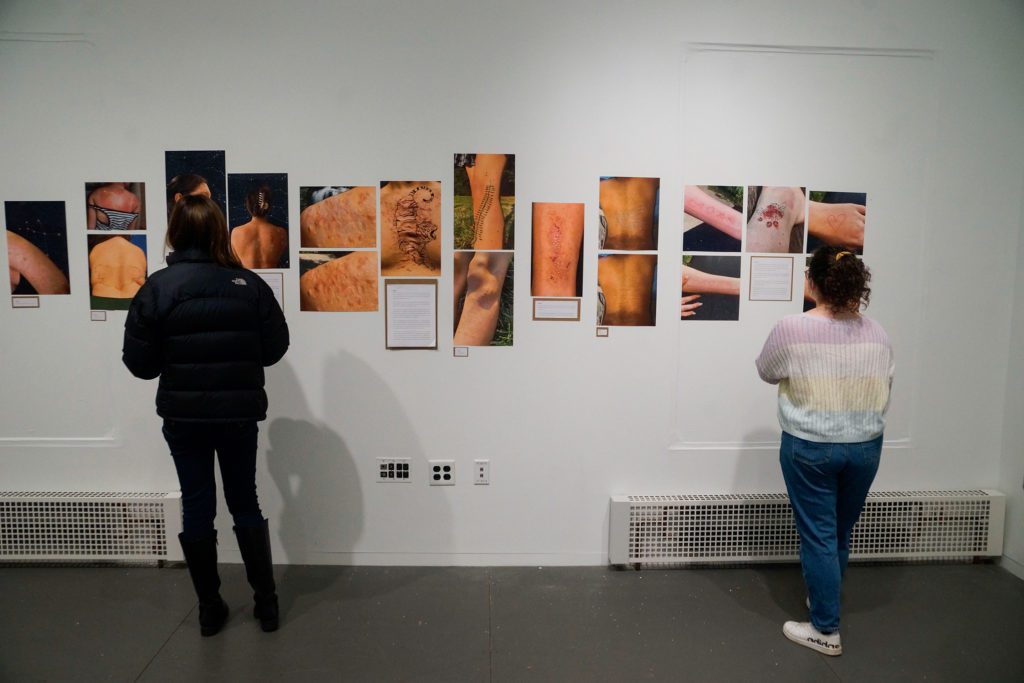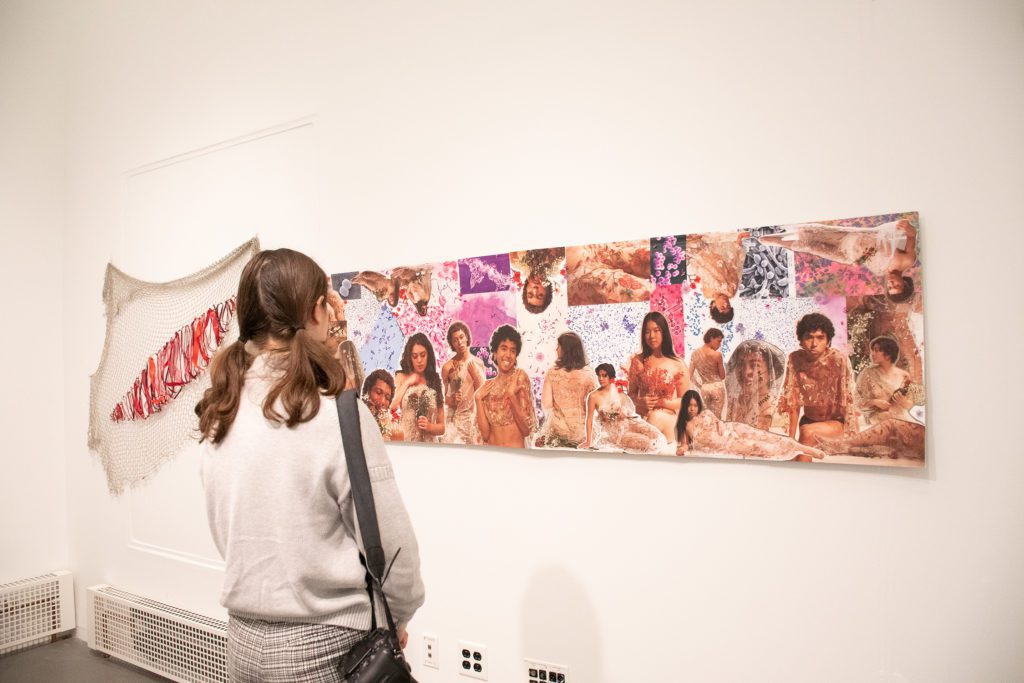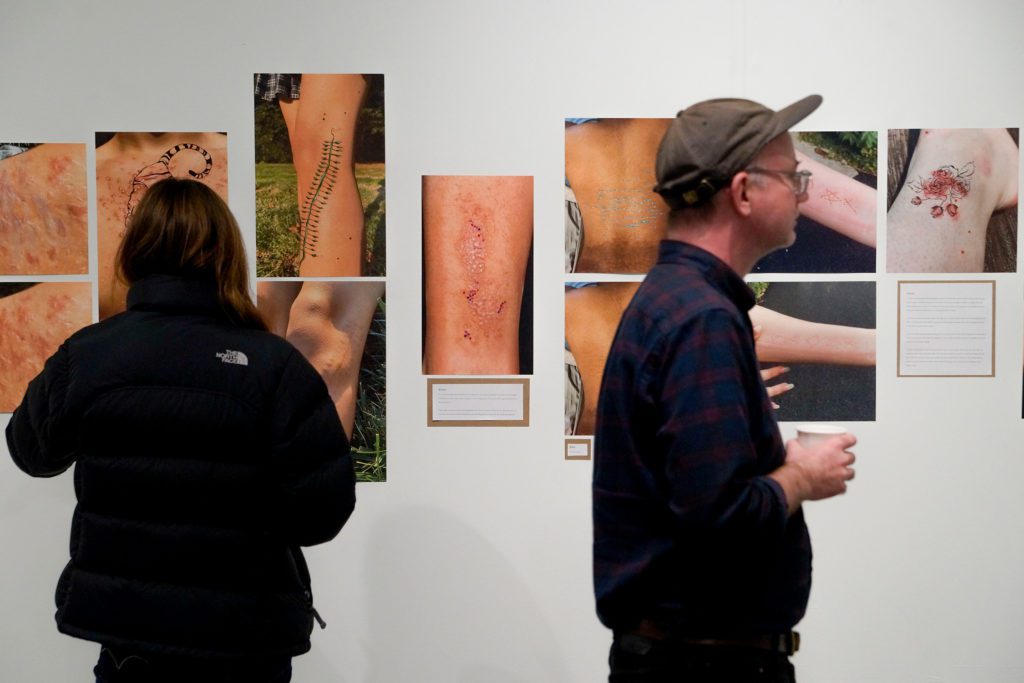Izzy Ray is well acquainted with the exhibition tradition at Haverford. In 2020, she created a mirror installation for VCAM’s 20/20 Vision open-call art exhibition. In 2021 and 2022, she co-curated the open call shows while creating an installation in each that related to themes of self-love and healing.
Inspired by her own scarring, Ray project’s for the 2022 Art of Healing show reimagined scars as physical proof of resilience and a powerful autobiographical medium. It featured a collection of photos from Bi-Co community members with stories to tell about their scars. This fall, Ray wanted to continue engaging with the community through art.
Combining her appreciation for science with her artistic prowess, she created A Love Letter to Skin, an exhibition that celebrates the aesthetic, cellular, and structural beauty of skin. The exhibition, which opened on Nov. 1, was on view through Nov. 28.
“I wanted to expand that [previous] project to encompass skin conditions, tattoos, and the underlying architecture and microorganisms that make our skin work the way it does,” said Ray. “After hearing that so many people were insecure about their scars, I felt like I had to showcase the beauty and uniqueness of all the other incredible things on our skin that people might think are ugly or gross, or might not even think about at all.”
When you enter the gallery in VCAM, a large colorful collage on the back wall immediately catches the eye. Skin Flora celebrates the skin as a thriving community of protective microorganisms. The collage includes photographs taken by Ella Mbanefo ‘26 of Bi-Co student models draped in floral fabrics. Ray interspersed the photos with fabric flowers, pressed flowers, faux pearls, and images of helpful bacteria that live on our skin.
“I was super excited for the opportunity to participate in Izzy’s exhibition,” said Luca Ponticello ‘24, one of the student models. “I think that, no matter what, it is important to feel both comfortable and beautiful in your own skin—metaphorically and literally.”
Also part of the exhibition is Skin Patterns, a photo series of skin conditions and scars of Bi-Co community members that Ray overlayed with illustrations and rhinestones to reframe them as unique aesthetic assets rather than blemishes.
“I appreciated how Izzy transformed individuals’ insecurities into beautiful art,” said Kendall Ozorowski ‘23, who contributed photos of her own acne and freckles to the series. “At first, I was worried about putting something I have been insecure about into the light, but afterward it made me appreciate my relationship with my skin more.”
Another artistic exploration of skin is Ray’s Epidermis Quilt, a wire structure interspersed with floral fabric that depicts the epidermis as layers of skin cells woven together. Purple rectangular cells surround a brown melanocyte, which produces melanin to protect skin from harmful UV rays, and an orange Langerhans cell, which helps fight off bacteria and viruses and heal injuries like scrapes and cuts. Another Langerhans cell, sculpted with wire and purple cellophane, hangs above the quilt.
Next to the quilt is an image of Ray creating it in bed. “I was stuck in bed after a minor surgery, so my sculpture was confined to fit the exact dimensions of my bed as I wove the structure over my legs, which gave me the idea of a quilt,” she said. “As my own skin around the surgery site was healing, I wove this quilt to celebrate the cells that were helping me repair my skin. Thus, the healing process of my own skin is woven into this quilt.”
In another artistic representation of the skin’s layers, the painting Epidermis illustrates a hematoxylin and eosin (H&E) stain of the epidermis. Through vibrant shades of indigo, purple, and magenta, these stains provide pathologists with a detailed view of the skin’s tissues. The purple faux pearl in each cell in the painting represents the nucleus.
Another series, titled Ink, displays a collection of tattoo photographs submitted by members of the Bi-Co. The photos celebrate skin as a canvas for storytelling, artistry, and remembrance. In front of them sits a ceramic hand holding a branch of red flowers. Ray painted the hand with mehndi, a traditional form of body art and temporary skin decoration that originated in the Indian subcontinent.
The exhibition’s centerpiece is a miniature Pool of Narcissus, composed of a mirror underneath a pool of water and faux moss to reference the story of Narcissus, a figure in Greek mythology who falls in love with his reflection in a pool of water. Exhibition attendees can look into the pool to see their own reflection and perhaps fall in love with themselves, too. Outside of the gallery space, Ray invited attendees to write love letters to their skin and place them in small origami envelopes.
Ray was surprised by how people who shared stories about their blemishes spoke of feeling so alone. “So many people I interviewed thought that they were the only one without ‘perfect’ skin,” she explained. “But I have a whole wall here of photographs of beautifully imperfect skin just within the Bi-Co. You are not alone in your skin patterns; everyone has something even if you can’t see it.”
She learned that self-love is a strenuous, non-linear journey for many people, especially when it involves our skin, which envelops our bodies and dictates the way we present ourselves to the world.
“I went into this project with the mission of convincing everyone to love their skin,” she said. “But as I started talking to people with really painful skin conditions, I realized I could not just delude people out of their pain with toxic positivity. Some skin patterns really do hurt; they bleed and peel, and no amount of appreciation will stop that. But I do hope that my work can reduce the shame that people carry because of their skin conditions, and inspire them to face the world with more confidence.”
This project also gave Ray more clarity about her future career path: “After my two skin projects and shadowing at a dermatology clinic this summer, I have my heart set on dermatology. Understanding skin and talking to people about their skin is a wonderful meeting point of biology, chemistry, aesthetic intuition, and the empathy that I’ve gained through these projects.”
Ray thanks Central Services for help with printing the large photographs, Associate Director of Cantor Fitzgerald Gallery and Campus Exhibitions Matthew Callinan and Post Baccalaureate Fellow Henry Morales for installation assistance, and the many community members who made themselves vulnerable in their contributions to the project. She hopes her exhibition can help revolutionize how people think about biology and beauty in their everyday lives.
“I hope this exhibition can be a healing space for anyone struggling to love and accept their skin or body. Hopefully, my models’ vulnerability can inspire more candid conversations about self-love, insecurity, and gratitude across the Bi-Co. I want viewers with blemishes to know that patterned skin holds more stories than blank skin, and that their patterns only add a special richness and depth to their appearance in my eyes.
On a larger scale, I hope this exhibition inspires people to become more curious about everyday objects and processes. Our whole life is made of ‘everydays’ and my biggest fear is letting it all pass me by without grasping all the little gems along the way. What is skin made of? What makes snow different from the water we drink? What gives the sunset its colors? I’ve found that there’s so much science and art behind everything we see each day, that I’m just grateful to exist here.”

